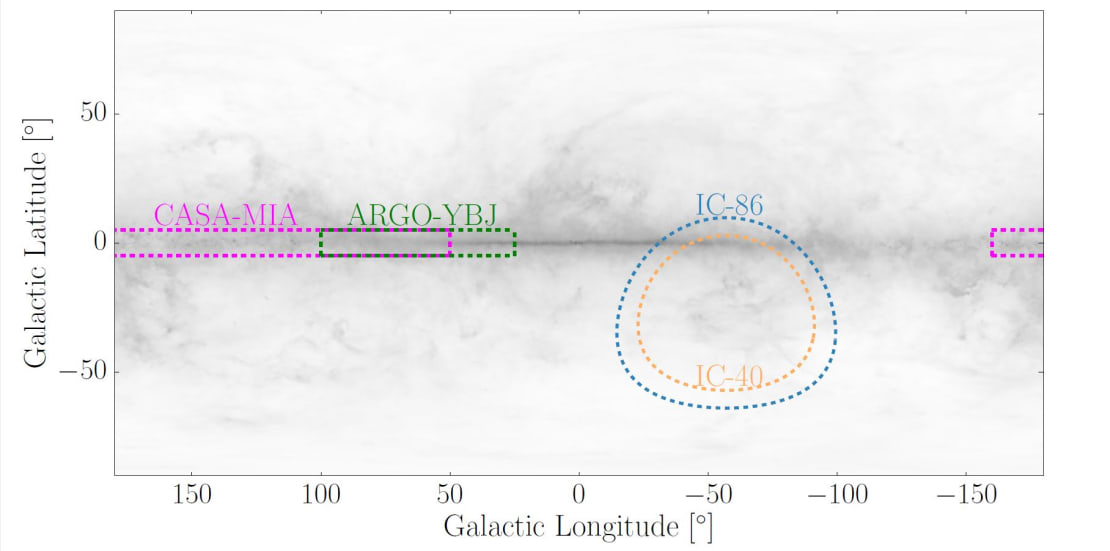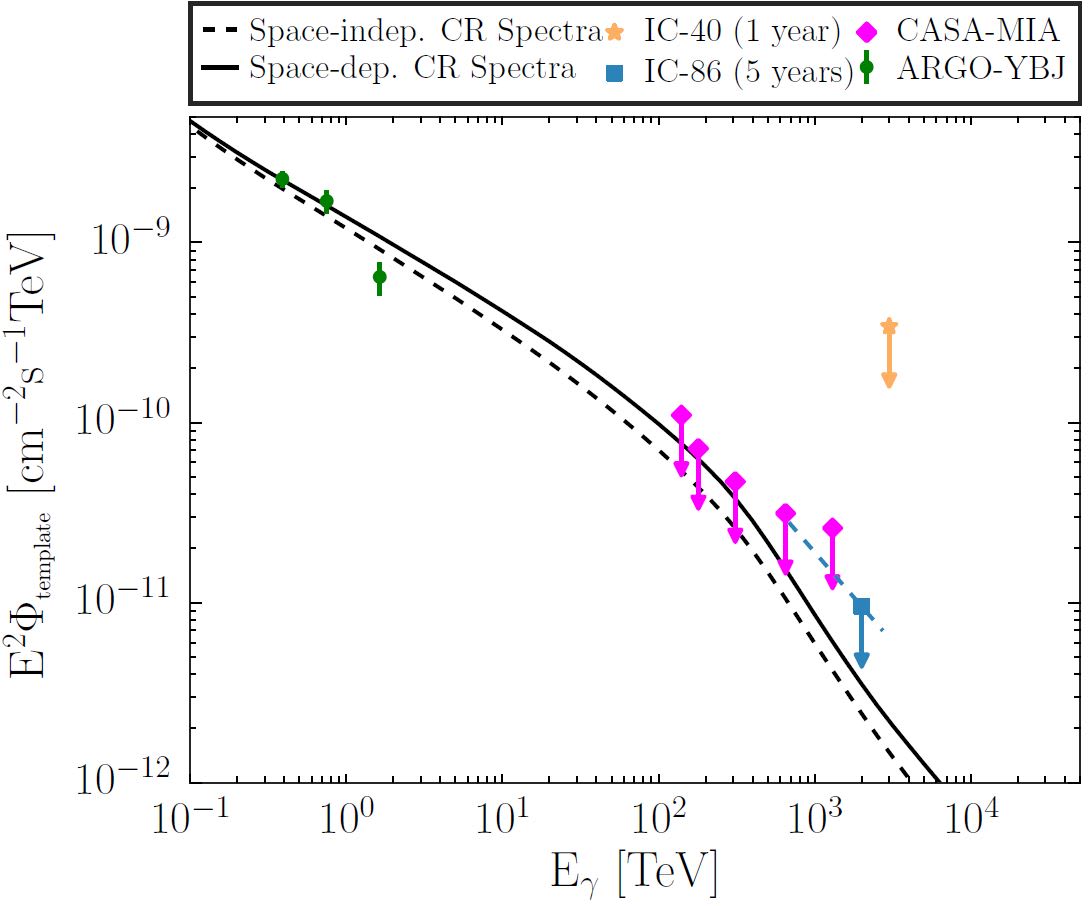Something in the Milky Way galaxy may be accelerating cosmic rays to very high energies—as in the level of a quadrillion electronvolts, called a petaelectronvolt (PeV). Scientists are not sure what might be pushing the cosmic rays to these extreme energies, and we cannot trace them back to their origins because magnetic fields in space bend their paths through space. However, magnetic fields have no effect on gamma-ray photons and neutrinos, which makes these particles critical to understanding and identifying the origins of cosmic rays.
While the IceCube Neutrino Observatory is mostly known for detecting neutrinos, it is also the experiment most sensitive to PeV-scale gamma rays in the Southern Hemisphere. This is thanks to the IceTop surface array: a collection of 81 stations, where a station consists of two tanks that each contain two optical sensors frozen in ice. When IceTop works in tandem with the 5,160 optical sensors that make up the in-ice component of IceCube, scientists are able to search for high-energy gamma-ray emission from the galactic plane, higher energy emission from known gamma-ray sources in the Milky Way, and evidence of neutrino emission within our galaxy as well.
Recently, the IceCube Collaboration performed analyses for each of these searches, but they found no evidence of PeV gamma rays consistent with the signal that they expected. However, they were able to establish the most stringent constraints on PeV gamma-ray emission to date. These results are discussed in a paper submitted to The Astrophysical Journal last week, “Search for PeV Gamma Rays with 5 Years of Data from the IceCube Observatory.”

Searching for PeV gamma rays is challenging on multiple accounts. “We are talking about finding a light particle that has more than ten times the energy of the highest energy gamma ray ever detected,” says IceCube collaborator Hershal Pandya from the University of Delaware, a lead on this paper.
In addition, PeV gamma rays do not travel very far from their birthplaces. Due to collisions with the cosmic microwave background photons present everywhere in the universe, PeV gamma rays are expected to travel no farther than the length of our galaxy, which naturally limits our field of view.
But according to Zach Griffith of UW–Madison, the other IceCube lead for this paper, the biggest challenge in this analysis was creating a dataset of candidate gamma-ray air showers. This is because IceTop detects these rare PeV gamma rays the same way it detects high-energy cosmic rays: by detecting the showers of particles that they produce upon entering Earth’s atmosphere. In fact, for every air shower produced by a gamma ray, IceTop sees tens of thousands of air showers produced by cosmic rays.
So Pandya and Griffith used information from both the surface and in-ice arrays to create a machine learning classifier capable of distinguishing between these types of air showers. Their algorithms had to skim more than 161 million air shower events observed by IceCube over the course of five years and find a few hundred thousand that best resembled their expectation of what a PeV gamma-ray air shower should look like.
Then, using the resulting dataset, Pandya and Griffith applied statistical analysis methods to look for different types of PeV gamma-ray emission. These tests essentially looked for gamma rays coming from the regions of the sky expected given a particular source type. If there were significantly more particles coming from those regions than the expected background, it could be taken as evidence of emission for that source.

The search for PeV gamma-ray emissions from different sources failed to find anything. But based on their knowledge of the IceCube detector’s sensitivity, Pandya and Griffith we are able to set a limit on the intensity of PeV emission. This upper limit will help researchers rule out certain theories of cosmic-ray propagation.
This analysis also failed to find any PeV emission from a host of gamma-ray sources observed by the H.E.S.S. telescopes, which confirms that these sources have a sharp decline or cutoff in gamma-ray production processes. The paper gives a maximum energy for this cutoff for a handful of sources.
“Many extensions to the IceTop surface detector are currently being evaluated, including scintillator panels, radio antennae, and air Cherenkov telescopes,” says Pandya. “All of these extensions would make IceCube much more sensitive to PeV gamma rays and increase our chances of finding them.”
Future studies will be able to search for gamma rays that are both at higher energies and closer to the Galactic Center. The latter is particularly interesting because the center of the Milky Way is the most powerful particle accelerator in our galaxy that we know of.
“Looking forward, IceCube will continue to be an important instrument for studying PeV gamma rays from its unique vantage point in the Southern Hemisphere,” says Griffith.
info “Search for PeV Gamma Rays with 5 Years of Data from the IceCube Observatory,” IceCube Collaboration: M. G. Aartsen et al., The Astrophysical Journal 891 9, iopscience.iop.org, arxiv.org/abs/1908.09918